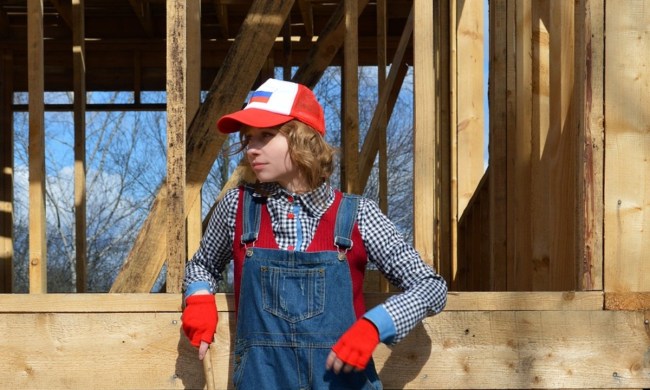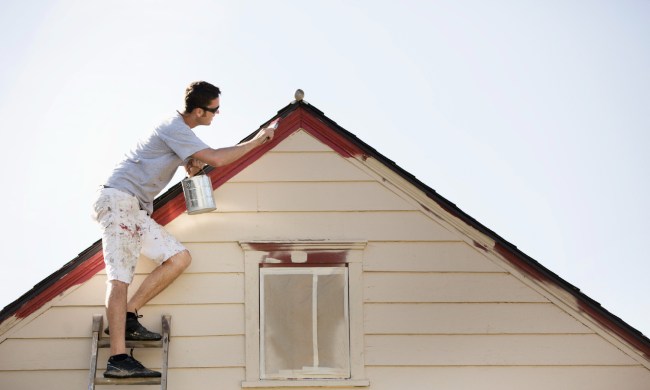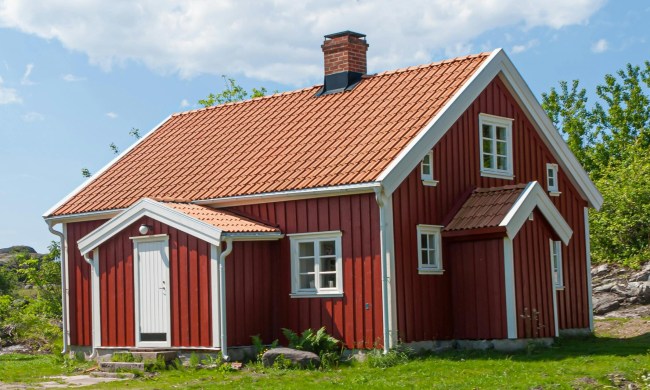Homeowners often get grandiose ideas about how to change the landscape design plan in their yards. They may not realize that some of those ideas are impractical or impossible due to their home’s design, the size and layout of their yard, the weather in their area, or another reason. If you’re thinking about upgrading your property’s landscaping, ask yourself if your ideas are realistic.
Choose plants that can thrive where you live
When selecting plants to grow in your yard, think carefully about the weather in your region, particularly the average amounts of sunlight and rainfall. You may have your heart set on a particular species of plant or flower that you saw on a trip or in a photo, but it may not be well suited to your climate.
Many plants can only thrive in a specific set of conditions. If your area gets too hot or cold or receives too much or too little rainfall, the species that you want may not be able to survive, no matter how much fertilizer and attention you give it. Other factors, such as insects and the pH of the soil, may limit your options.
If you’re struggling to figure out which types of plants would be well suited to your property, seek professional advice. The U.S. Department of Agriculture divides the country into hardiness zones to help people figure out which plants to grow where they live.
If you visit a local garden center or nursery, an employee should be able to point you in the right direction. You may find it helpful to seek advice from someone who lives nearby and who has a yard that you admire. Those people may be full of valuable advice on which plants to choose, when and where to plant them, how to care for them, and how to avoid making mistakes.
You can also reach out to local contractors. John Whetzel, owner of Sunset Landscaping, LLC, in Hamden, Connecticut, said, “Usually I do a consultation. I ask customers what is their end goal.” He discusses issues such as weather, shade, sun, and the characteristics of various types of trees and shrubs. He also performs a soil test to find out if its pH is in the appropriate range for plants and trees to grow.
Jim Lynch, owner of Lynch Landscaping, LLC, in Hamden, Connecticut, pointed out the importance of hiring a qualified contractor who is willing to tell you that you might be making a mistake. “Some contractors will just plant anything,” Lynch said. “You need to do a proper scanning of who you’re hiring.”
Select trees and locations carefully
If you’re thinking about planting trees in your yard, consider your region’s soil and climate. Your best bet is to choose one or more species that are native to your region.
Trees should be proportionate to your house. Before you plant any tree on your property, make sure you know approximately how tall it will be when it’s full grown so you can select a species that won’t look too tall or too short in relation to your home.
When choosing a location for a tree, think about how long its roots will be when the tree is full grown. You don’t want to plant a tree in a place where its roots will eventually spread so far that they can damage a driveway, walkway, patio, or the house’s foundation.
Think about other potential downsides of various species. For example, deciduous trees look beautiful in the autumn, but they can cover your lawn with leaves that will have to be collected with a rake or leaf blower. Ask yourself if you would have the time and energy to deal with that task or would be willing to pay someone else to do it. If the answer is no, you may be better off planting evergreen trees. With other species, pollen and fallen fruit may be issues to think about.
Use hardscaping to enhance your landscaping design
Hardscaping can complement the plant life in your yard. “Hardscaping” refers to non-living features, such as a deck, patio, stone wall, fire pit, walkway, and gazebo.
When considering hardscape features to include in your yard, think about creating a cohesive design. For instance, you may decide to create a stone walkway that meanders through a garden or that leads to the front door of your house.
You will have a wealth of options when it comes materials. Brick and pavers are popular choices for walkways. You may also want to consider incorporating loose stones.
For a deck, wood is commonly used, but it can splinter and can be damaged by moisture and insects. Composite decking is more resistant to damage and easier to maintain in areas where heavy rainfall and insects are a concern.
If you’d like to create a patio, concrete may be a good choice. You can use concrete that has been texturized or that has other materials embedded in it for a more decorative look than plain concrete. Natural stone is another popular patio option, but it may have an uneven surface, which can create a tripping hazard.
When it comes to patio materials, “Everything is on the table for that. There is nothing you can’t install,” Lynch said. “It’s all about base preparation for these projects.”
Lynch explained that if the base is too thin or too thick, homeowners may experience problems. He noted that many people focus on price and hire contractors who cut corners when it comes to base preparation, which can lead to bigger problems down the road.
Don’t try to do too much
If you envision a garden, patio, or other feature, think about how it would look in the context of your property as a whole. If you have a large yard, it might work, but it might look out of proportion in a yard that’s on the smaller side.
Also, think about how your plans could impact your family’s ability to use the property in other ways. For instance, if a patio takes up a large portion of the yard, there might not be enough space left for your children to play.
Anticipate and address drainage issues
Before you settle on any landscaping project, consider potential drainage problems. If anything prevents water from running downhill, water will wind up somewhere you don’t want it to be.
If water runs toward your house, you may experience leaks and mold in your basement, as well as foundation damage. If water collects in a particular section of your yard, it can cause flooding that can kill vegetation.
According to Lynch, drainage issues are mainly due to grading, or a “positive pitch toward the house. It normally doesn’t stem from a new project, but it certainly can” if a project isn’t done correctly. Lynch noted that in some cases, it’s necessary to get an engineer involved to deal with a drainage problem.
Whetzel said homeowners have several options to deal with drainage issues. Sometimes it’s possible to use additional soil to raise the terrain so water flows away from the house. In other cases, installing a French drain to carry water to another part of the property or to a sewer drain is a better solution.
Follow local zoning rules
Your city or town most likely places restrictions on changes that homeowners can make to properties. Be sure to research those rules and follow them. You may have to pay for a permit.
“A lot of clients don’t think about zoning and permits and don’t want to pay for it,” Lynch said. Even though a permit can be costly, it isn’t an area where you should cut corners to save a buck.
You may be able to find a contractor who will make the landscaping changes you want without securing a permit, but you may have to pay a fine later. Also, the contractor may be inexperienced and unqualified. If the contractor makes a mistake, it may cost you a lot more to fix it than it would have cost you to get a permit.
Set a realistic budget before you talk to landscapers
When planning any home improvement project, it’s easy to get carried away and spend more than you can afford. That’s why it’s important to figure out how much you can afford, then plan your project around your budget. You may have to face the fact that something on your wish list simply isn’t a viable option because of the cost.
“We try to get a budget out of people if they’re willing to share one with us. It saves a lot of time going back and forth,” Lynch said. “Some customers don’t realize all the steps involved [in a project]. They might be up front with you and say, ‘We can’t do this.’”
A project that seems simple to you may be more complex than you realize. You may have to pay more than you expected, but it will be money well spent if it helps you prevent a serious problem in the future.
For example, Whetzel said, “A retaining wall four feet or higher needs to be engineered” because of “the sheer amount of weight behind that wall” that is moving and pushing against the wall. For that type of project, Whetzel has an engineer draw up a plan that addresses the type of block to use, drainage, and other issues.
You may find that even though you can’t afford exactly what you’re dreaming of, you can still have most of what you want. For instance, Whetzel pointed out that there are many materials to choose from when it comes to stone retaining walls and patios. “Once we know a customer’s budget, we can narrow it down” to a type of stone that is affordable, he said.
Dream big, but be realistic
There’s nothing wrong with wanting your yard to look spectacular, but you may discover that an idea simply won’t work due to the characteristics of your property, your area’s climate, or your budget. That doesn’t mean you have to abandon your plans, but you may have to make some adjustments. An experienced contractor can work with you to help you find other options that are more realistic.







